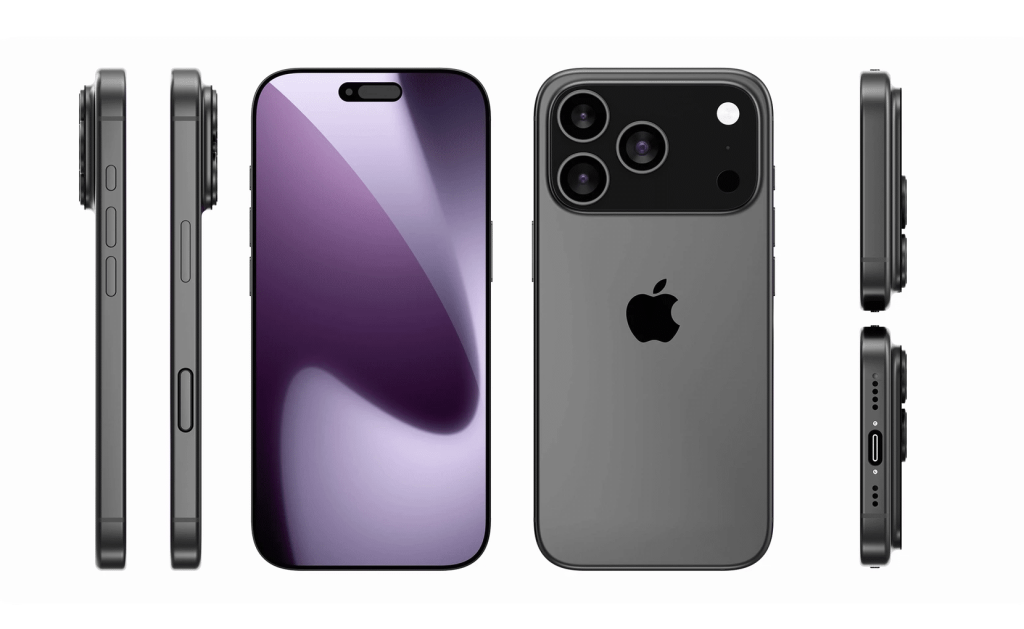Apple’s iPhone launches follow a well-established rhythm, with new models typically revealed in early September and hitting stores shortly after. This year’s event is expected to occur during the week of September 8, likely on Tuesday, September 9, a date corroborated by internal documents from German mobile carriers. Pre-orders are anticipated to begin on Friday, September 12, with the official release following on Friday, September 19. This schedule aligns with Apple’s historical pattern: the iPhone 16 was announced on September 9, 2024, with pre-orders on September 13 and a release on September 20. Similarly, the iPhone 15 launched on September 22, 2023, after a September 12 announcement. This consistency ensures retailers and carriers are well-prepared, and users can mark their calendars for the big day.
The iPhone 17 Lineup: Four Models, New Directions
The iPhone 17 series will consist of four models, a shift from previous years with the elimination of the Plus variant. The lineup includes the standard iPhone 17, the innovative iPhone 17 Air, and the premium iPhone 17 Pro and Pro Max. The decision to drop the Plus model stems from its lackluster sales, as consumers gravitated toward either the base or Pro models. Instead, Apple is introducing the iPhone 17 Air, a mid-tier device with a sleek, ultra-thin design that aims to bridge the gap between affordability and premium features.
The standard iPhone 17 will feature a larger 6.3-inch display, up from the 6.1-inch screen of its predecessor, matching the size of the iPhone 17 Pro. The iPhone 17 Air is expected to sport a 6.6-inch display, while the Pro Max will retain its 6.9-inch screen. These size adjustments reflect Apple’s focus on offering distinct choices for users, from compact to expansive displays, catering to diverse preferences for media consumption, productivity, and portability.
iPhone 17 Air: Redefining Thinness
The iPhone 17 Air is generating significant buzz for its ultra-thin design, rumored to measure around 5.5 to 6.25 mm at its thinnest point, making it the slimmest iPhone ever. For comparison, the iPhone 16 Pro is 8.25 mm thick, and even the iPhone 6, Apple’s thinnest to date, measured 6.9 mm. This slim profile comes with trade-offs, including a smaller 2,800mAh battery—over 20% less capacity than other iPhone 16 models—and a single 48-megapixel rear camera, forgoing the ultra-wide and telephoto lenses found on Pro models. The Air is expected to use a titanium-aluminum alloy frame to prevent bending, a nod to durability concerns raised by earlier thin devices. Priced around $899, it will sit between the base iPhone 17 at $799 and the Pro models starting at $999, offering a compelling option for users prioritizing aesthetics and portability.
Camera and Performance Upgrades
Across the iPhone 17 lineup, camera improvements are a key focus. All models are expected to feature a 24-megapixel front-facing camera, doubling the resolution of the 12-megapixel sensor in the iPhone 16. This upgrade promises sharper selfies and enhanced video quality, catering to content creators and casual users alike. The iPhone 17 Pro and Pro Max will push the envelope further, with all three rear cameras—main, ultra-wide, and telephoto—upgraded to 48-megapixel sensors. The telephoto lens is rumored to offer a 3.5x optical zoom, with a “crop zoom” mode enabling 7x shots at 12 megapixels, providing flexibility for photographers. Additionally, a new camera bar design will replace the traditional square bump on the Pro and Air models, stretching across the device’s width for a modern aesthetic.
Performance-wise, the iPhone 17 and iPhone 17 Air will likely feature the A19 chip, while the Pro models will get the more powerful A19 Pro chip. The Pro and Pro Max will also boast 12GB of RAM, a 50% increase from the 8GB in the iPhone 16 Pro, ensuring smoother multitasking and support for Apple Intelligence features. Enhanced cooling systems, including a vapor chamber in the Pro Max, will help manage heat during intensive tasks like AI processing or gaming.
Display Innovations for All
A significant change for 2025 is the democratization of ProMotion technology, which enables a 120Hz refresh rate for smoother scrolling and animations. Previously exclusive to Pro models, ProMotion will now be available across all iPhone 17 variants, thanks to the adoption of LTPO OLED displays. This upgrade ensures a more fluid user experience, whether browsing, gaming, or watching videos. The Pro models will also feature a new anti-reflective, scratch-resistant display coating, enhancing durability and visibility in bright conditions. While always-on display functionality is enabled by LTPO technology, it remains unclear whether it will extend to the base iPhone 17 or remain a Pro exclusive.
Pricing and Market Considerations
Pricing for the iPhone 17 series is expected to remain close to current levels, though some analysts suggest a potential $50 increase due to tariffs. The projected pricing is $799 for the iPhone 17, $899 for the iPhone 17 Air, $999 for the iPhone 17 Pro, and $1,199 for the Pro Max. These prices reflect Apple’s strategy to maintain accessibility while introducing premium features. The iPhone 17 Air, in particular, aims to attract users who want a balance of innovation and value, potentially boosting Apple’s market share in the mid-tier segment. The absence of an iPhone 17 Plus and the introduction of the Air model signal Apple’s intent to streamline its lineup while addressing evolving consumer preferences.
Why It Matters for Users
The iPhone 17 series represents Apple’s response to a competitive smartphone market, where innovation must balance practicality and cost. The ultra-thin iPhone 17 Air could appeal to users seeking a stylish, lightweight device without the premium price of the Pro models. Meanwhile, the Pro and Pro Max cater to power users with their advanced cameras, increased RAM, and robust performance. The universal adoption of ProMotion ensures that even the base iPhone 17 delivers a premium experience, making this lineup one of Apple’s most inclusive yet. For users, these updates mean better visuals, faster performance, and more creative tools, whether they’re capturing memories, working on the go, or enjoying media.
